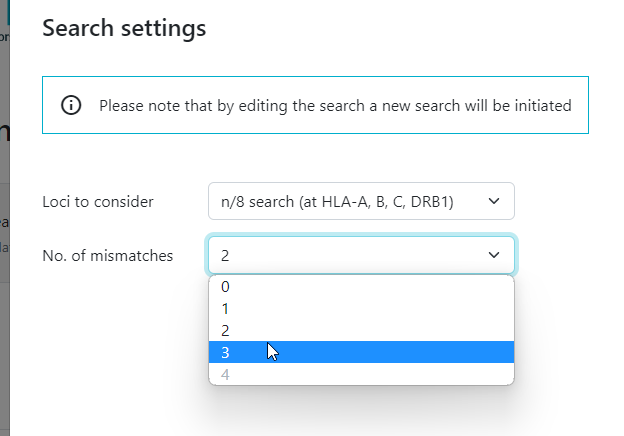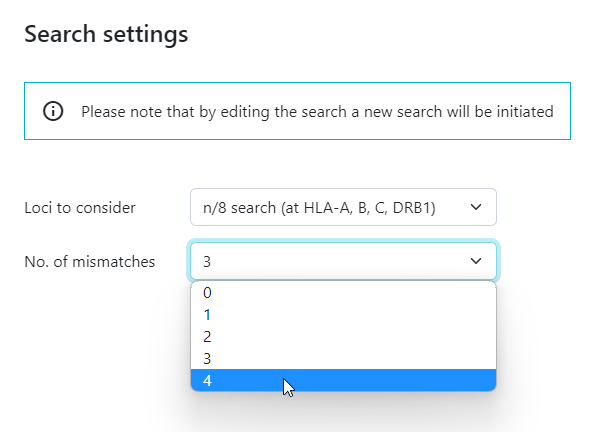...
Both the UK and USA guidelines for cord blood selection recommend three and four mismatches as suitable options for patients with high-risk leukemia and for treatment-resistant types of blood cancer. Some of the WMDA member organisations have implemented to run a routine cord search with up to four mismatches as a default.
3 and 4 mismatch searches have now been implemented for Cord searches. Here are some things you need to know:
Therefore, WMDA has implemented this option as well in Search & Match Service.
At the moment, the Search & Match Service (with the Hap-E matching algorithm) is providing an extensive list of potential cord blood units, when you are performing a three and/or four mismatch search. For search coordinators it is difficult to select the best possible potential stem cell source, when they perform a three and/or four mismatch search in the Search & Match Service today.
The match list presents all possible options. In order to help search coordinators to select the best potential stem cell source, WMDA has implemented an additional tool to assist, you can read the details below.
How to perform a three and/or four mismatch search for cord blood?
Three and four mismatch searches have been implemented for cord blood searches in Search & Match Service. This is a resource intensive service, therefore you first perform a two mismatch cord blood search before you start a three mismatch cord blood search:
- Step 1: run a two mismatch cord blood search, In order to minimise unnecessary use of resource-intensive 3 and 4 mismatch cord searches, you first need to have finisheda 2 mismatch CBU search before you can start a 3 mismatch search
- a 3 mismatch CBU Step 2: run a three mismatch cord blood search before you can start a 4 four mismatch cord blood search
Just like in the legacy system
What is important to know about three and/or four mismatch search?
In the old version of Search & Match Service, no overall match probabilities
...
calculations for cord blood were done and sorting
...
was performed within the match class (i.e. 5/8. 4/8) based on the Total Nucleated Cell (TNC
...
) or CD34
...
+ cell counts (depending on what
...
a search coordinator prefers). This has been implemented in the same way for the new version of Search & Match Service.
In the new version of Search & Match Service the
...
number of search results can be bigger
...
. If you experience a high number of potential cord blood options, you can for example filter on the minimum TNC, minimum CD34+ or by certain registries or mismatch locations.
Future improvements
As mentioned above, since 3 and 4 mismatch CBU search results do not have any match probabilities calculated, the results are currently sorted within their match class (e.g. 5/8, 4/8) only by TNC or CD34. The Hap-E algorithm in the new Search & Match service returns more potential CBUs than the legacy system. Many of these “extra” CBUs tend to be low probability CBUs that have low resolution or missing typing. This is not actually “wrong” because they are a potential match, but many of these tend to not be good candidate CBUs.
...

